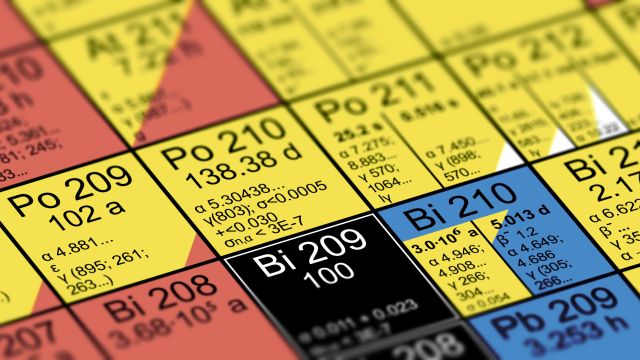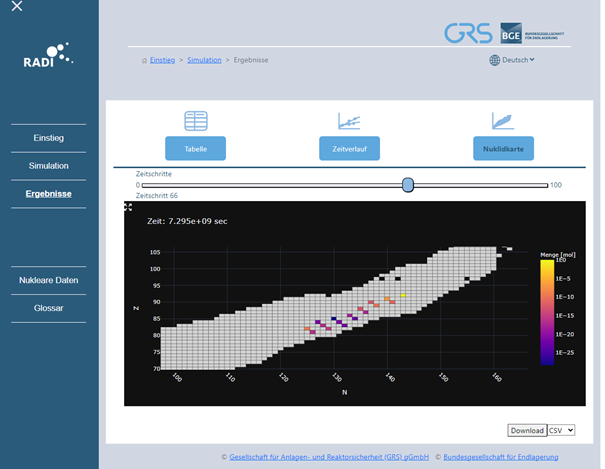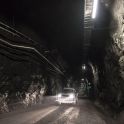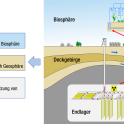
A tool for use in repository research: Open Source Code Radi calculates decay chains of radioactive materials
Radioactive waste should be isolated from the environment in a repository for at least one million years. The geological formation is the most important natural barrier against the radioactive material escaping. This natural barrier must be supplemented by a suitable construction concept and container design and must be able to withstand the chemical and mechanical loads on site. For a repository to be licensed, it must be demonstrated that the site, repository, containers and waste are actually safe and robust.
In order to be able to make any statements about whether, in what way and how many radionuclides could leave the repository over a period of one million years, so-called mass transport models are used. Knowledge about the decay of the individual radionuclides is an essential prerequisite for a realistic calculation of these models.
While some radionuclides decay into a stable nuclide after just a few seconds, other materials take millions of years to do so. At the same time, some radionuclides have a complex decay chain involving many other radionuclides before a stable nuclide is reached. Long-lived radionuclides are particularly important for assessing the safety of a repository, partly because new, shorter-lived nuclides are constantly being produced as a result of their decay.
Radi calculates decay chains of around 3,800 radionuclides
GRS has developed Radi, an open-source calculation software that simulates these complex decay chains, on behalf of BGE, the federal company for radioactive waste disposal. Radi calculates the decay for around 3,800 radionuclides, of which around 40 are relevant when it comes to disposal - including, for example, plutonium-239, technecium-99 and selenium-79.

The radionuclides and the calculated time period can be freely chosen by the user depending on what the application requires. The most important information on all calculable nuclides is stored in Radi (e.g. half-life, decay energy, decay products). In addition, both researchers and interested members of the public will be able to access the functions of Radi in future via a freely accessible interactive web application.
Within the material transport models, Radi calculates the nuclides for the entire emplacement area in the repository. To do this, the area is divided into a large number of individual cells. As a result, large amounts of data are calculated, which can be processed efficiently with Radi.
In addition to the repository analyses, Radi is also to be used to support the associated tasks - such as the development of containers to be used for disposal.

Project highlights Disposal

In the research project ANSICHT, the concept of a method for the safety case of a German repository for high-level radioactive waste in argillaceous (clay) rock was developed in 2014 with the help of generic geological site models and taking into account the legal requirements. However, this could not yet be fully tested at the time. Therefore, in the follow-up project ANSICHT-II, which has now been completed, calculations for long-term safety analyses were carried out to test the safe containment of radionuclides in the containment-providing rock zone (CRZ) in the clay rock for the two repository site models investigated in ANSICHT.

When evaluating repository systems in crystalline rock, the possible fracturing of the rock is a challenging variable. In the CHRISTA-II research project, GRS scientists have developed modelling for such a system and studied the influence that various parameters can have on the underground transport of contaminants over thousands of years.

For a long-term assessment of the safety of final repositories for radioactive waste, the program package RepoTREND (Transport and REtention of Non-decaying and Decaying contaminants in a final REPOsitory) is being developed and applied by GRS. In this program package, all relevant processes which contribute to the mobilisation and release of contaminants from the repository, transport through the host rock and adjacent rock formations as well as exposure in the biosphere have been implemented.